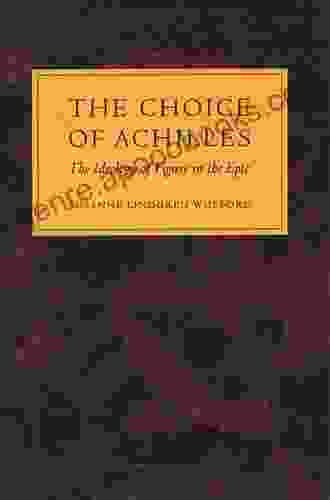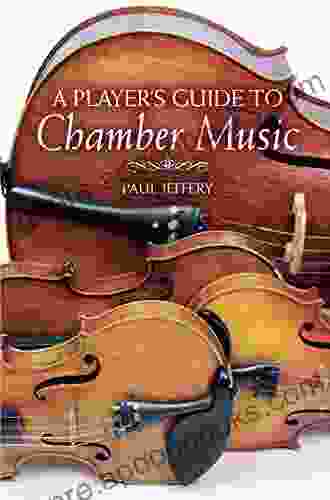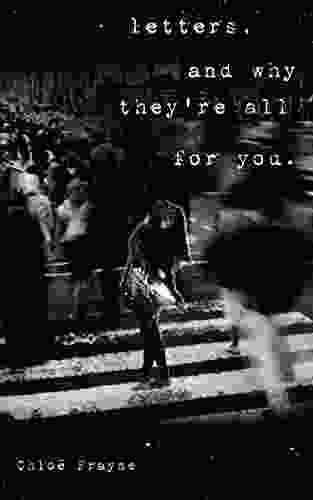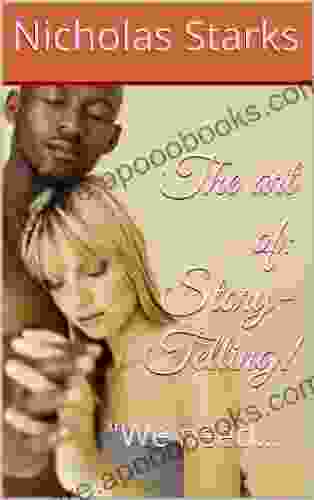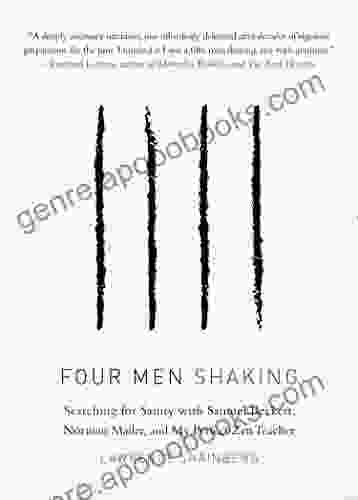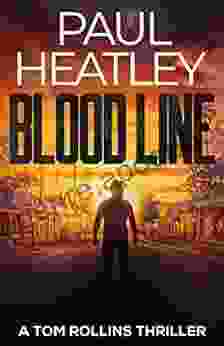The Ideology of Figure in the Epic: An Exploration of Archetypes, Symbolism, and Literary Devices

The epic genre stands as a testament to the enduring power of storytelling, captivating audiences for centuries with its grand narratives, heroic characters, and profound themes. At the heart of every epic lies a cast of figures who embody universal archetypes, convey symbolic meanings, and serve as vehicles for conveying timeless truths. In "The Ideology of Figure in the Epic," we embark on an in-depth exploration of these figures, examining their significance and the literary devices employed to craft their compelling presence.
Archetypes: The Universal Blueprint
Archetypes are universal patterns and symbols that transcend time and culture, representing fundamental human experiences and emotions. In epics, archetypal characters embody these patterns, serving as relatable and enduring figures that resonate with readers across generations. From the heroic figure, representing courage and determination, to the wise mentor, symbolizing guidance and wisdom, archetypes provide a framework for understanding the human condition and the struggles and triumphs that define our existence.
4.9 out of 5
| Language | : | English |
| File size | : | 10875 KB |
| Text-to-Speech | : | Enabled |
| Screen Reader | : | Supported |
| Enhanced typesetting | : | Enabled |
| Print length | : | 535 pages |
| Paperback | : | 130 pages |
| Item Weight | : | 6.4 ounces |
| Dimensions | : | 5.85 x 0.33 x 8.27 inches |
Symbolism: Beyond the Surface
Symbolism is a powerful literary device that imbues objects, actions, and characters with deeper meanings. In epics, symbols are employed to transcend the literal realm and evoke profound emotions and ideas. A recurring symbol might represent a particular theme, such as the journey representing life's challenges, or it might embody a specific concept, such as the color red symbolizing passion or danger. By unraveling the layers of symbolism, we gain a richer understanding of the epic's underlying messages and the complexities of human experience.
Literary Devices: Crafting the Narrative
Literary devices are the tools that authors use to create vivid and engaging narratives. In epics, these devices serve to enhance the impact of the figures and their actions, immersing the reader in the epic's world and amplifying its emotional resonance. Foreshadowing builds anticipation and suspense, while imagery paints vivid scenes that transport the reader to the heart of the story. Similes and metaphors create connections and deepen understanding, drawing parallels between the epic's events and relatable everyday experiences. These devices orchestrate a symphony of words that captivates the reader and leaves a lasting impression.
Comparative Analysis: Unveiling Cross-Cultural Connections
Comparative analysis provides a lens through which we can explore the similarities and differences between epics from diverse cultures. By comparing the figures, archetypes, and literary devices employed in epics from ancient Greece, medieval Europe, and the oral traditions of indigenous cultures, we uncover universal themes and patterns that transcend geographical and temporal boundaries. This comparative approach deepens our understanding of the human experience and the enduring power of storytelling across cultures.
Cultural Values: Shaping the Narrative
Epics are not merely entertaining tales; they are also reflections of the cultural values and beliefs of the societies that produced them. The figures within these epics embody the ideals, aspirations, and fears of their creators. By examining the cultural values embedded within epics, we gain insights into the social and historical contexts that shaped their narratives. These values provide a backdrop against which the actions of the figures unfold, influencing their decisions and shaping the overall message of the epic.
Human Experiences: A Mirror to Ourselves
At their core, epics are mirrors reflecting the human experience. The figures within these narratives grapple with universal challenges, strive for noble goals, and endure profound losses. Through their journeys, we witness the resilience of the human spirit, the complexities of love and relationships, and the eternal quest for meaning and purpose. By exploring the human experiences depicted in epics, we gain a deeper understanding of ourselves and our place in the world.
"The Ideology of Figure in the Epic" offers a comprehensive exploration of the profound influence of archetypes, symbolism, and literary devices in shaping the epic genre. Through in-depth analysis, comparative study, and a keen eye for cultural context, this work unveils the enduring power of epic literature to captivate, inspire, and illuminate the human experience. Whether you are a seasoned scholar, a curious reader, or simply someone seeking to delve into the depths of storytelling, this book is an invaluable resource that will enrich your understanding and appreciation of the epic genre.
4.9 out of 5
| Language | : | English |
| File size | : | 10875 KB |
| Text-to-Speech | : | Enabled |
| Screen Reader | : | Supported |
| Enhanced typesetting | : | Enabled |
| Print length | : | 535 pages |
| Paperback | : | 130 pages |
| Item Weight | : | 6.4 ounces |
| Dimensions | : | 5.85 x 0.33 x 8.27 inches |
Do you want to contribute by writing guest posts on this blog?
Please contact us and send us a resume of previous articles that you have written.
 Book
Book Novel
Novel Page
Page Chapter
Chapter Text
Text Story
Story Genre
Genre Reader
Reader Library
Library Paperback
Paperback E-book
E-book Magazine
Magazine Newspaper
Newspaper Paragraph
Paragraph Sentence
Sentence Bookmark
Bookmark Shelf
Shelf Glossary
Glossary Bibliography
Bibliography Foreword
Foreword Preface
Preface Synopsis
Synopsis Annotation
Annotation Footnote
Footnote Manuscript
Manuscript Scroll
Scroll Codex
Codex Tome
Tome Bestseller
Bestseller Classics
Classics Library card
Library card Narrative
Narrative Biography
Biography Autobiography
Autobiography Memoir
Memoir Reference
Reference Encyclopedia
Encyclopedia Peter H Schuck
Peter H Schuck Lee Zimmerman
Lee Zimmerman Patricia Bage
Patricia Bage Matt Whyman
Matt Whyman Martin Puchner
Martin Puchner Lila Kossyvaki
Lila Kossyvaki Ladii Nesha
Ladii Nesha Thom Holmes
Thom Holmes Kim Moore
Kim Moore Ml Nystrom
Ml Nystrom Sam Tracy
Sam Tracy Stacy Horn
Stacy Horn Sujata Massey
Sujata Massey Maaza Mengiste
Maaza Mengiste Tade Thompson
Tade Thompson Wendi Tooth
Wendi Tooth Thomas R Dilley
Thomas R Dilley Patrick Lindsay
Patrick Lindsay Susan Wise Bauer
Susan Wise Bauer Yi Wang
Yi Wang
Light bulbAdvertise smarter! Our strategic ad space ensures maximum exposure. Reserve your spot today!
 Devon MitchellThe Ultimate Fashion Extravaganza: Top 10 Movies With the Most Iconic Styles
Devon MitchellThe Ultimate Fashion Extravaganza: Top 10 Movies With the Most Iconic Styles Ezekiel CoxFollow ·9k
Ezekiel CoxFollow ·9k Ray BlairFollow ·14k
Ray BlairFollow ·14k Lee SimmonsFollow ·4.6k
Lee SimmonsFollow ·4.6k Miguel NelsonFollow ·10.2k
Miguel NelsonFollow ·10.2k Edmund HayesFollow ·17k
Edmund HayesFollow ·17k Roberto BolañoFollow ·4.1k
Roberto BolañoFollow ·4.1k Bernard PowellFollow ·18.3k
Bernard PowellFollow ·18.3k Bill GrantFollow ·4k
Bill GrantFollow ·4k
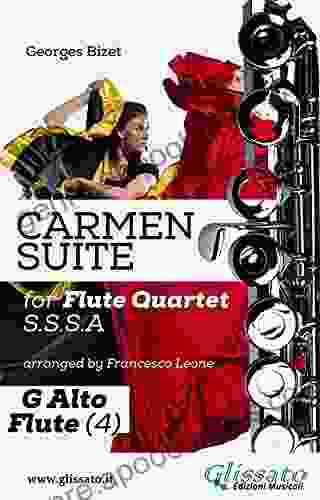
 Finn Cox
Finn CoxCarmen Suite For Flute Quartet (G Alto Flute) ( Carmen...
Experience the Magic of...

 Andy Cole
Andy ColeUncover Hidden Truths: A Comprehensive Guide to Detecting...
: The Silent...

 Ken Simmons
Ken SimmonsUnleash Your Potential: Transform Frustration and...
Are you tired of feeling...

 Rick Nelson
Rick NelsonHard To Kill: A Gripping Thriller That Will Keep You on...
Tom Rollins is a...

 Ivan Turner
Ivan TurnerUnleash the Power of Your Breath: Discover Breath...
In the tapestry of life, where stress and...
4.9 out of 5
| Language | : | English |
| File size | : | 10875 KB |
| Text-to-Speech | : | Enabled |
| Screen Reader | : | Supported |
| Enhanced typesetting | : | Enabled |
| Print length | : | 535 pages |
| Paperback | : | 130 pages |
| Item Weight | : | 6.4 ounces |
| Dimensions | : | 5.85 x 0.33 x 8.27 inches |


